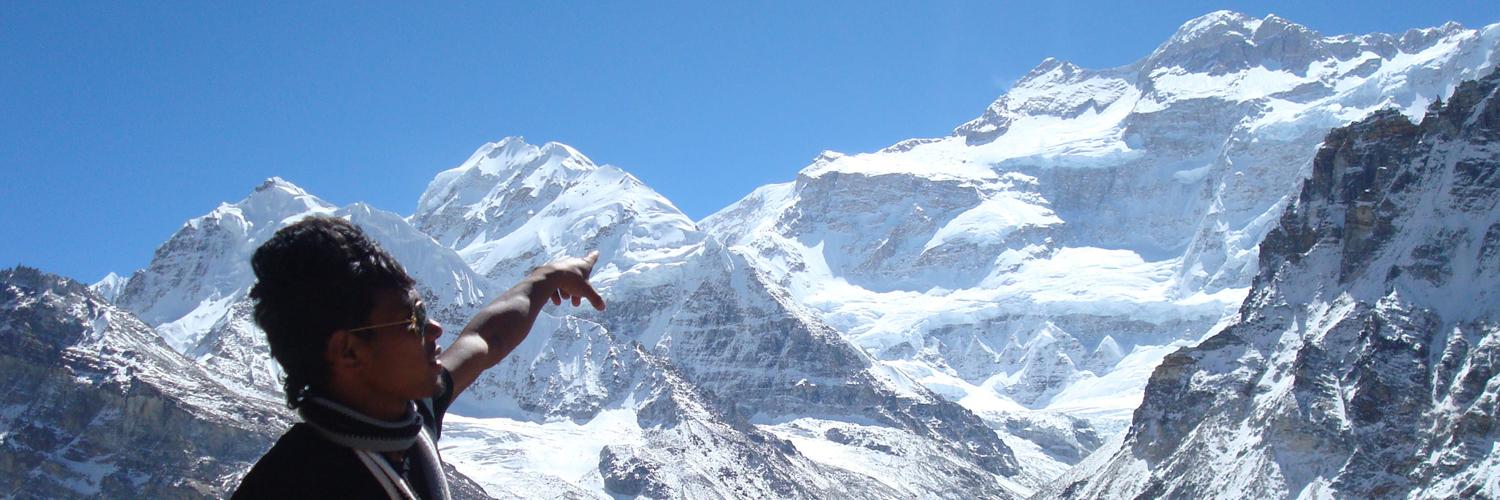Few individuals even dare to imagine hiking Kanchenjunga's routes, and even fewer people actually succeed in doing so. Even the third-highest mountain in the globe is the subject of countless mythology. What is real, though, is the breathtaking expanse of the massive blocks that stretch across both India and Nepal and even stand still in the emptiness that separates them.
You might be in awe of Kanchenjunga's five different summits, each of which is exquisite in its own unique way. Though Kanchenjunga is the third-highest mountain in the world, very few know about the otherworldly region that can be discovered on the slopes surrounding the summit.
Below are just a few examples of its magnificence; more exhilarating experiences to look out for are:
Kanchenjunga Mastiff
The Tibetan term "Kangchendzönga," which translates to "the five treasures of snow," is the source of the name "Kanchenjunga," an appropriate appellation for the group of five mastiffs that constitute the Kanchenjunga. All of these mastiffs are taller than 7900 meters, with Kanchenjunga in Nepal's northeast, at 8586 meters, being the tallest.
These dispersed peak shapes coordinate in perfect harmony, each expressing its own distinctive qualities without detracting from the others. The circuit walk has repeatedly shown trekkers that Kanchenjunga is, in fact, the most stunning mountain range in the world.
Rich Biodiversity
The Terai-Duar savanna and grasslands, the Eastern Himalayan broad-leaved and coniferous forests, and the Eastern Himalayan alpine shrub and meadows make up the three unique eco zones that make up the Kanchenjunga region. These protected areas are home to various endangered wildlife species, such as the snow leopard, Asian black bear, red panda, white-bellied musk deer, blood pheasant, and chestnut-breasted partridge, as well as two globally notable plant species, rhododendrons and orchids.
Actually, the diversity of ecosystems and animals is why the Kanchenjunga Conservation Area was established. Please do not disturb any threatened species you may come across; instead, leave them alone.
Sherpa, Limbu, Rai, and Lhomi warm hospitality
Respected as the guardians of the Himalayas, the Sherpas extend the warmest welcome to guests, as do the neighboring ethnic groups of Limbu, Rai, and Lhomi. Many tea house lodges can be found along the path, and as you warm up with hot tea by the fire to fend off the chill, locals have a story to share.
Sherpas are great trek guides, always prepared to help and provide you with precise information about any place. Along the way, you will come across the unique cultures of the numerous ethnic communities.
Stunning wild paths at lower altitudes
The summit of Kanchenjunga can be reached via four different climbing routes, three of which begin in Nepal. The journey begins in Taplejung and is centered on the 5,143-meter-high Kanchenjunga base camp.
While 5000 meters is the highest point to observe, lower elevations can still provide amazing vistas. Large boulders and steep slopes encircle grooves that provide nature with an ideal canvas on which to showcase her bizarre, abstract quirkiness. Every step leads you down a different path among the various options, and you'll be amazed at how everything came together so flawlessly.
The trail offers peace in the midst of the elements, glaciers gliding across motionless streams, and a gentle breeze conversing with the still rocky hills.
Local Drink- Tongba
Tongba, the most well-known regional beverage in eastern Nepal, is a millet-based beverage and an essential component of Limbu culture. Your taste buds will be enhanced and your level of excitement will increase, making the trip more enjoyable. Being a hot beverage, it is the ideal getaway on chilly, windy nights. Gather around the fire with your friends to warm your tired, cold bodies while you sip on this delicious beverage.
On its own, Kanchenjunga is a natural gem and a gift from nature. Its display of not one, but five separate faces have led to numerous stories among both residents and trekkers. One thing is for certain, though: when you first see this enormous beauty, the majestic aspect will leave you dumbfounded. For beautiful sky and breath-taking views, the Kanchenjunga journey, which can last up to 28 days, is best taken in the spring and fall seasons. Don't wait for someone else; push yourself to experience the rush of trekking in the Kanchenjunga region on your own!
Author: Marron Treks
Date: 6th September, 2024


